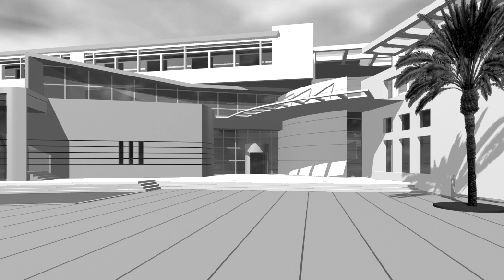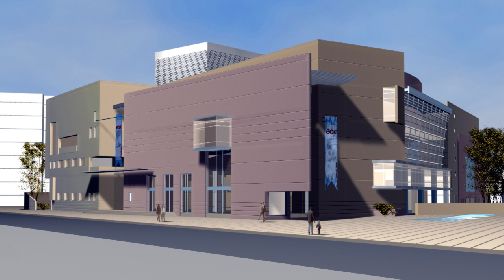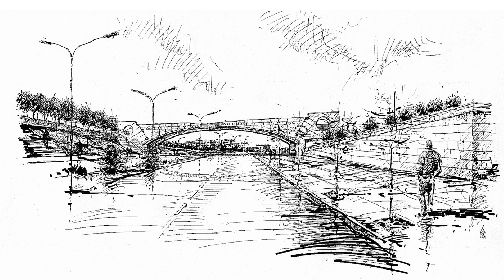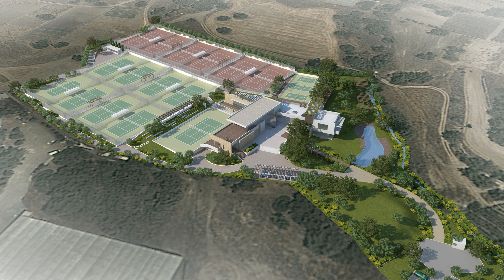

ERGO 7 ARCHITECTS participated in this open International Architectural Competition about the design of Helsinki Central Library, organized by the City of Helsinki in April 2012.
The design followed simple ideas on basic issues-- more --:
(i) Social Create an environment that embeds library function into everyday urban life and activity. Introduce a social space, an ‘interior pedestrian street’ that transverses through the library for everyday city functions. Create a street-like meeting lobby.
(ii) Environmental Respond to harsh climatic conditions (winter).
Enhance the site’s special relation with nature: being simultaneously at the center of the metropolis and at the edge; where built up area meets the park and opens to the natural landscape.
Use building spatial components and drastic landscape elements to create microclimate. Add ‘atrium’ and ‘sunken courtyard’ to ‘Interior Street’ in order to forma transitional zone where filtered street life is at the same time protected (winter) and opened to the city and the landscape.
Create a vantage exterior view platform (sloped ‘activity plaza’) for distant views to the park and the lakes. Add the missing third dimension to the pedestrian and the landscape.
(iii) Urban Integrate the library into the urban flow and dynamics of the surrounding built environment.
Adhere to the library complex appropriate density and magnitude to participate into the cityscape at equal terms with the important buildings around it.
Create three interrelated entry points; (‘city’, ‘metropolitan’, ’park’) responding to the urban scale and density of each direction. Use strong primary volumes and limited materials. Use softer texture and smaller scale articulation at the denser East. Articulate through volumetric scale towards the western and northern distant views. Add to cityscape unique iconic images to reinforce the new library’s visual identity.
(iv) Philosophy (library / books) Library function undergoes a transition from the ‘book oriented era’ into the ‘information oriented era’.
How solid is the library new role? Information is collected, processed into mapped out areas of knowledge at a slower rate than information is produced and sought out. Library has to deal with a vastness (a chaos?) of both chartered ad uncharted or sought out knowledge.
Books will continue deep into the next era both as unique human invention and as collectable objects - icons that represent the chartered knowledge. Books will be present everywhere.
Glass, at its advanced technological adaptation, can carry the symbolic value of the new era (non-materiality, vagueness, projection, multi imagery). A sharp, fully glazed elevation will project overlapping images of both outside (reflections: nature, cityscape, sky) and inside (projection of multilevel interior activity movement and structure).
(v) Symbolism (elements / materials) Books as means of transferring information have followed a long evolution through history. Every related new technological step resulted in a change in human civilization, introducing a new era. Books, as tangible / material objects, and digits transferred through ‘non-material’ waves coexist in the current intermediate state.
To choose ‘wood’ (book, paper, wood, tree) and ‘glass’ (screen, projection, transparency, non-materiality) as dominant materials for the library, for their symbolic value, as well as and for their direct relation to the natural and local elements (woodlands, water surfaces) that characterizes Finnish landscape.
An interior street, ties Library’s world to everyday urban life. It transverses diagonally the complex creating a long axis (xx) that extends beyond to vanish NW into the park.
Natural environment (park and water) wedges into the city’s built-up area reaching up to the site and creating an ‘edge’ situation. Edge and centrality, centrality deriving from location and by the presence of buildings of metropolitan magnitude that frame the site, are in essence the dual prominent urban characteristics of the site. The sites duality is architecturally enhanced and treated by the emphasis given to the two axes; the ‘civic’ axis (yy) as defined by the Parliament’s axial orientation and the ‘park – interior street’ axis (xx).
The linear strength of the two axes invades into the building block, interacts with its Cartesian geometry, releasing architectural energy, energizing interior composition.
Landscape elements are essential to integrating the complex into the urban context and to provide transition and orientation. Strong landscape elements of considerable urban value are introduced.
A sloped activity plaza, with urban solidity equivalent to the building mass, is introduced as a key component. It re-orients the library complex north towards the Park. It offers multiple social activity experiences and becomes a unique public place that adds to the library identity. It directs park landscape to ascend to most of library levels, while adding the missing third dimension, revealing outward distant views to the park and beyond.
The new library building flanks the east side of the open space formed between the site and the Parliament. The urban entity of the library contributes to the integration of this open space into an important civic node loaded with metropolitan magnitude. Library participates in the cityscape around the node by turning facades with varying degree of introversion and texture, responding to the deferent urban scale and orientation to each direction. A unique façade expresses the edge situation towards the park. It is a façade that reflects exterior natural elements (park, trees and sky) superimposed on projections of the vivid interior activity. A technological façade that aesthetically transverses from materiality to non-materiality: symbolizing the transition into the non-material information era.
Edge/Center duality governs the interior scene as well. ‘Edge’ axis xx becomes the longitudinal circulation spine enhanced by the transparency between inside and outside through the glass façade. ‘Centrality’ is expressed through the transformation of the (yy) axis into a vertical axis through the atrium, pinning the center of gravity of the interior world. Entrance/Lobby/Meeting The three entrances delineate the lobby as the primary social-meeting zone. The Lobby obtains a street – ‘urban square’ character. It flows down -- more -- descending to the sunken cinema lobby and sunken courtyard. It flows up with seating steps, stairs, escalators and glass free-standing elevators, through the sky lit interior atrium that creates observation balconies at all levels.
Circulation Evolves around the edge of atrium and along the west glass/façade before taking various wandering curvilinear directions among lounges and collections.
Collections are organized along circulation paths, merged together with reading and lounge areas of varying character, spotted with glass-enclosed rooms for work, study, interaction. Interior life and zoning is interplay between fluidity and rigidity, movement and control, transparency and isolation. Lounges play the “flow” part while program elements that need autonomy /privacy /quietness /isolation, play the ‘rigid’ role (Children world, staff facilities, services etc).
Restaurant At ground level (0) to open up to the park, to have autonomy of function and entrance from Toolanlahdenkatu. Together with the shop (commercial) at the same level and the exhibition spaces above (level 1) occupy the volume under the ‘activity plaza’ within the block boundaries. Café Marks the endpoint of the ascending “activity plaza”, becomes a destination point for both interior and exterior movements, it is a vantage observation point with high view to all directions.
The wandering ascending movement through the levels of collections and lounges crowns up into the Rotating Panoramic Lounge, a special interior space needed to attract citizens away from their house comfort into the interactive library environment. A unique reading room that combines collection (periodicals) with movement (seating arrangements are moving along a rotating belt at very slow speed) and ever changing viewing perspectives out to the city and beyond. The rotating lounge is expressed and articulated so as to add to the cityscape an iconic image that will represent the library’s essential role: Vide, Lege
Vide (imperative of video): Latin. To see, observe, understand, comprehend
Lege (imperative of Lego): Latin. From Proto-Indo-European “leg”. Cognates include Ancient Greek “λέγω” ( gather, pick up, collect, count, tell): To choose, select, appoint / collect, gather / take, steal / traverse / read, recite
.
Site 4800m2 • Built area 16000m2
.
Architect ERGO 7 ARCHITECTS • Energy experts Eva Athanasakos-Elias Sofronis • Structure Demetriou Engineering















